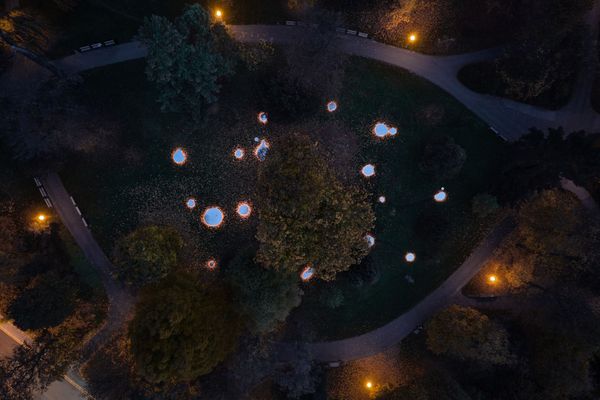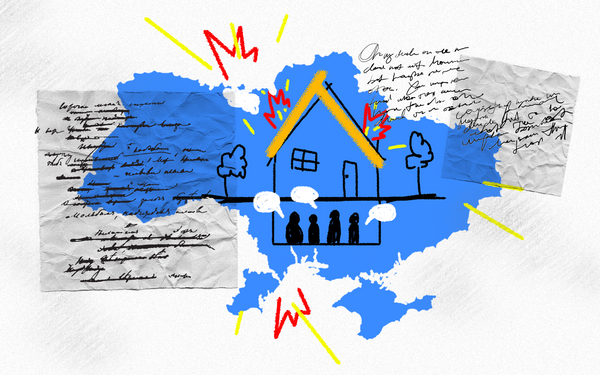People, words, buildings, stories and moods—all of these and more have contributed to creating the Budapest we know today over the past 150 years. To mark the anniversary, we asked people who are connected to the capital by a thousand (or at least a hundred and fifty) threads about the past and future of Budapest and their personal connection to the city.
Török András, local historian and guidebook writer
What would you have been in Budapest 150 years ago?
Probably a tutor raised and educated in Pest, and I would have been hired by some landowner in the Orczy Café who would have wanted to have his son educated at home. My first foreign language would have probably been German, rather than English. But sooner or later I would have returned to Pest and become a journalist. I would have longed for Vienna, but I would never have gone there.
The differences in geography, history and development still create tangible contrasts between Buda and Pest. What do you like about both?
As Peter Hanák once wrote, Buda is historically the Garden, and Pest is the Workshop. I have always been attracted to the latter. With the exception of three months (when I was seduced by a bewildering pair of brown eyes), I have always lived in Pest. I had a reason: “Nothing ever happens in Buda...” That’s a gross exaggeration, of course, but I love going to the theater and I’ve always loved walking home. I like to go to Buda to have a view down to Pest. Hiking has mostly remained a pipedream—until now. My papers would suggest that I’m an ancient greybeard, but I feel half as old on the inside. So I’m still planning on it.



What are the best and worst things about Budapest?
The best thing is the great diversity and the river, which is “almost always at hand”. I live 100 meters away from it now, and I can see it from my window (if I lean out and look to the left.) The range of cultural events is also amazing. Compared to its population, Budapest is an “overcultured city”—thankfully. Let’s hope it stays that way. The bad thing is the fragmentation, due to the tragic mistake of the Re-founding Fathers in 1990, who thought that excess of freedom was the right remedy for a lack of it. Well, not at all.

Which image and/or song best describes Budapest for you?
Péter Závada’s slam song Budepesmód (music: Akkezdet Phiai), which begins like this:
Budapest is my smoky living room,
where, tired, from head to toe,
I come home,
even if I never left.
Budapest is your full lips.
The Danube is your smile,
when you take a bath,
with duschbad dripping from your chin.
Budapest is self-destruct,
the pontage and the tribute.
A mute voice from the profound mind.
A face without a face.
(Free translation.)
If you had to recommend a book about Budapest that might also be available in a foreign language, which would it be?
It’s hard to recommend a book about today’s Budapest that is available in both English and Hungarian. (About the old one, obviously, Budapest 1900 by John Lukacs comes to mind.) Instead, I’d like to recommend a bilingual album: Budapest Catalogue by Mátyás Szöllősi, with photographs made by the author. This book by the talented poet, writer of short stories, and photographer deserves greater recognition. It was born from the naturalization of a New York-based Facebook page.
Who or what is the most ‘Budapester’ person or thing for you?
The ‘architectural storyteller’ and the most successful walking tour organizer couple are the first two to come to mind, but I will instead say a collective, the 444.hu team of journalists, who created the 444 Good Places In Budapest and renew it every four years. I could also mention Iván Tosics, the ever-youthful urban sociologist, and my friend Noémi Saly, who quickly forgets her role as the Catholic lady from Buda when the fate of the city troubles her. György Kroó once said that in cultural life it’s not worth declaring the winners, but it’s worth thinking about the runners-up. Well, they’re my dream team.
The most Budapester thing? Being well informed—about the recently opened restaurants, the old Budapest pictures that were just uploaded to Fortepan, and what the opinion leaders of the quality press, András Földes, Miklós Vincze, András Zsuppán, write about Budapest that day.


If you had to live in one of the region’s other capitals instead of Budapest—Vienna, Belgrade, Ljubljana, Bratislava, Prague, Warsaw, or Zagreb—, which one would you choose?
Neither is an option. I had the chance to work abroad in my life, but the city wouldn’t let me leave. I know and love Vienna—but to live there? I cannot imagine it. Budapest rulez!
How do you see Budapest in another 150 years?
As Budapest will be free of private cars, the streets and squares between the houses built in the first Golden Age will once again give the impression of a spacious city. The surrounding cities will be very close thanks to the TGV—Vienna, and Bratislava will be less than an hour away. Budapest will be more of a city-state, one of the EEA’s A-class metropolises, rather than the capital of Hungary. Being a Hungarian citizen will be like being a resident of one of the Hungarian counties today. In my opinion, Budapest will become a stronger brand than Hungary.
Portrait: András Török
Graphic design: Roland Molnár

Zlín’s 700 years of history comes to life in the city’s castle park











